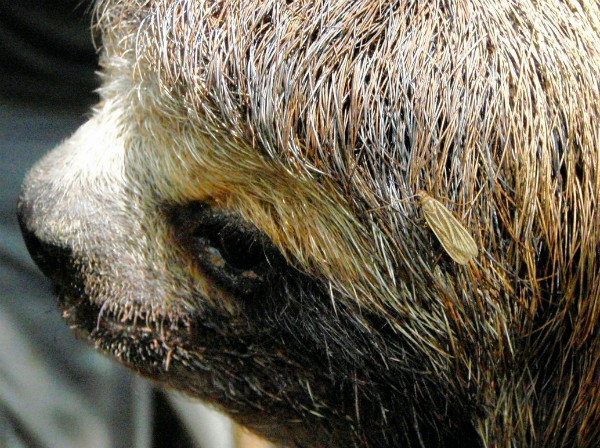Not lazy sloths, algae and moths
Community and Forum → Blog → Not lazy sloths, algae and moths
Lev Bely, 30.01.2014 16:20

Biologists wondered a lot why sloths known for their extraordinary inactivity came off trees... for a toilet procedures. Whilst these mysterious critters are evidently in more safe when staying atop rather then being down on the forest floor, once a week they still leave their secure monastery and descend on the floor. Some even have favourite trees to come again and again with their toilet needs.
Researchers varied in opinions on this “earth” ceremony. Guesses included fertilization of a favourite plant, getting minerals from the soil to enliven the ascetic vegetarian diet... No one was surely proved. The most likely is a surprise and gets to be more about moths than of sloths.
Jonathan Pauli, an assistant professor at the University of Wisconsin, Madison, got a clue after watching a “Mouldy Sloth” documentary by BBCWorldwide where David Attenborough, naturalist and president of Butterfly Conservation, told about special sloth camouflage of algae infused in the sloth's fur. These algae change colour according to a season, turning green when it's rainy and the sloth kind of disappears in the surroundings, whilst during drought periods the algae dye out and so looks the sloth who gets nearly invisible and thus secured.
The sloth's fur is a whole miniature ecosystem and a habitat not only for algae but even moths. The animal can lodge about 120 species of moth at a time. Weirdly, sloths don't seem whatsoever disturbed or bothered, the opposite, Pauli thinks the insects originate the sloth’s odd toilet habits.
Jonathan Pauli studied three-toed sloths in their natural habitat in San José, Costa Rica, and noticed that when a sloth descended down on the forest floor for a toilet procedures, moths left the animal and laid eggs in the sloth's feces. Having hatched, the new moths got back into the sloth's fur and the new cycle started over.
Thus coming down sloth may support moths' lifecycle which in turn provide algae growth. Algae not only make up a perfect camouflage but may also be a useful nutrition for sloths who groom one another and eat the algae. Tasty or not, for strictly vegetarian sloths it could be a good addition of minerals, fat and calories.
Though Jonathan Pauli's theory is yet to be proved, it's one of the best explanations so far for this odd habit. The mysterious sloth got secured amidst algae and moths. Pure vegetarian:)
The Independent, http://www.independent.co.uk
Photo: Cryptoses choloepi in a three-toed sloth Bradypus variegates, Carmen Ohio, http://carmenohio.deviantart.com
All the rest posts on: curiosity, animals, Latin America, science, USA
Comments
New comment
Note: you should have a Insecta.pro account to upload new topics and comments. Please, create an account or log in to add comments.
* Our website is multilingual. Some comments have been translated from other languages.
Random species of the website catalog
News
- 02.03.2025: Moscow Insect Fair: New section on the Insecta.pro Website
- 31.12.2024: If you need to upload a lot of photos to Insecta.pro website
- 10.12.2024: Новое поле в «Поиске энтомологов»
New photos (22.03.2025)
Fresh from the community
- 23:33, L. Bolshakov: К сожалению, вы поступили неверно. ...
- 13:27, P. Khramov: Олег, я уточнил этот вопрос у автор...
- 13:24, P. Khramov: Hipparchia hermione and Hipparchia ...
Popular insects
Recommended blog topics
- ICZN Election of Commissioners
- Meanwhile, in Kotelnich
- Interview with Alexander Zatakovoy, one of the wild Russian entomologists
- Papilio ulysses wing shot at 20:1



























